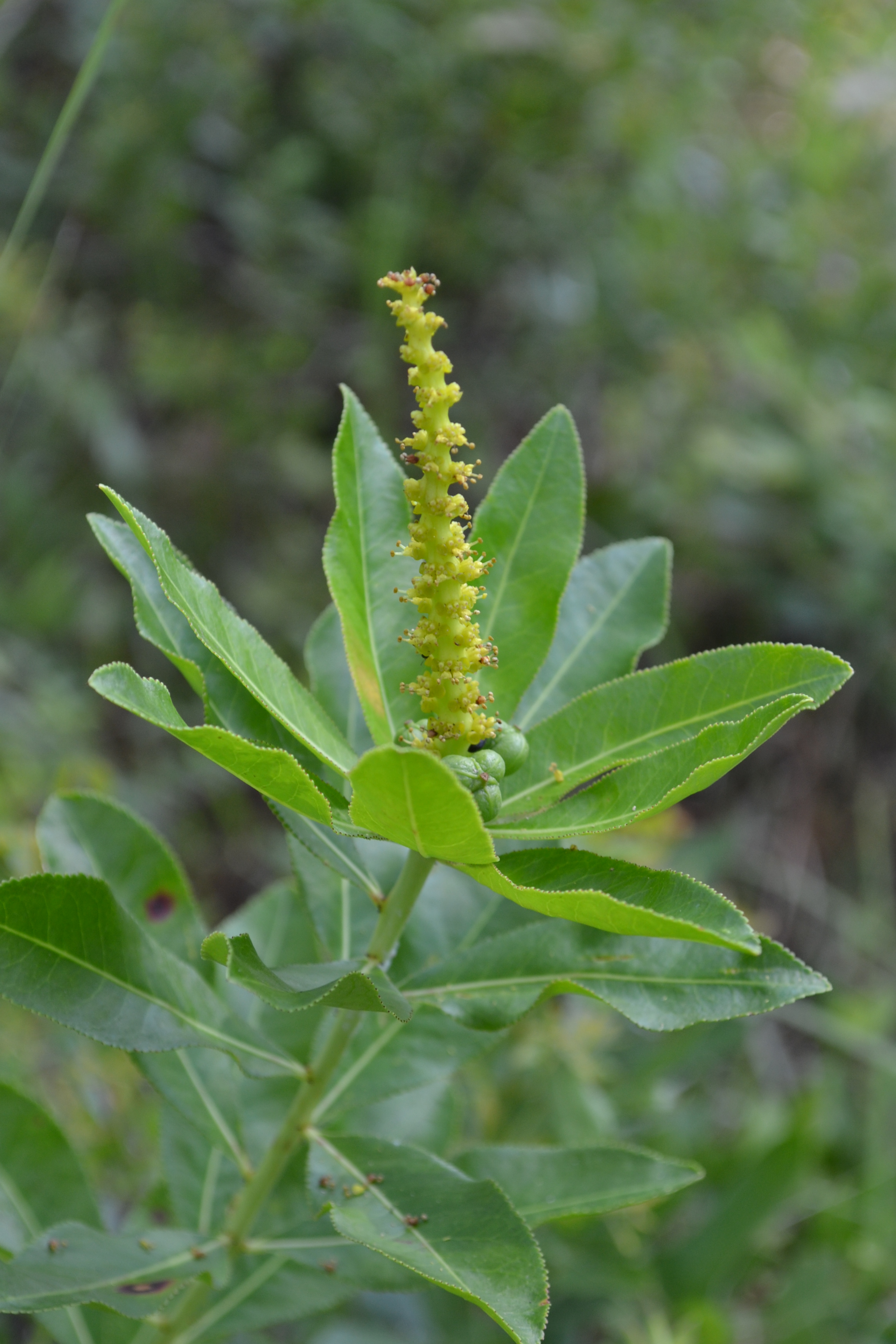Stillingia sylvatica
| Stillingia sylvatica | |
|---|---|

| |
| Photo taken by Michelle M. Smith | |
| Scientific classification | |
| Kingdom: | Plantae |
| Division: | Magnoliophyta – Flowering plants |
| Class: | Magnoliopsida – Dicotyledons |
| Order: | Euphorbiales |
| Family: | Euphorbiaceae |
| Genus: | Stillingia |
| Species: | S. sylvatica |
| Binomial name | |
| Stillingia sylvatica L. | |

| |
| Natural range of Stillingia sylvatica from USDA NRCS Plants Database. | |
Common name: queen's-delight
Contents
[hide]Taxonomic notes
Description
Distribution
Ecology
Habitat
In the Coastal Plain in Florida and Georgia, S. sylvatica can be found in sandhills (FSU Herbarium; Stamp and Lucas 1990), pine flatwoods, open pine-oak woodlands, recently burned pine-oak scrubs, longleaf pine-wiregrass stands, longleaf pine-turkey oak-wiregrass, and annually burned pinelands (FSU Herbarium). Substrate types include loamy sand, sand (FSU Herbarium), and siliceous, hypothermic Ultic haplaquod of the Pomona series (Moore et al. 1982).
Associated species include Stillingia aquatica, Phlox floridana, Asimina longifolia var. spathulata, Lactuca graminifolia, Pterocaulon undulatum, Asclepias humistrata and Quercus hemisphaerica (FSU Herbarium).
Phenology
It has been observed flowering April through July (FSU Herbarium).
Seed dispersal
It is dispersed explosively (up to 3 meters); seeds are forcefully expelled after the fruit matures and dries. It can also be dispersed by ants (Stamp and Lucas 1990).
Seed bank and germination
Fire ecology
It seems to respond positively to burning. In an experiment by Greenberg, he noted that the percent cover of S. sylvatica was highest 16 months after a May burn (2003).
Pollination
Use by animals
The seeds of S. sylvatica contain elaiosomes and have been found in middens of Florida harvester ants, Pogonomyrmex badius (Stamp and Lucas 1990).
Diseases and parasites
Conservation and Management
Cultivation and restoration
Photo Gallery
References and notes
- Florida State University Robert K. Godfrey Herbarium database. URL: http://herbarium.bio.fsu.edu. Last accessed: Collectors: States and Counties: Compiled by Tall Timbers Research Station and Land Conservancy.
- Greenberg, C. H. 2003. Vegetation recovery and stand structure following a prescribed stand-replacement burn in sand pine scrub. Natural Areas Journal 23:141-151.
- Moore, W. H., B. F. Swindel and W. S. Terry. 1982. Vegetative response to prescribed fire in a north Florida flatwoods forest. Journal of Range Management 35:386-389.
- Stamp, N. E. and J. R. Lucas. 1990. Spatial patterns and dispersal distances of explosively dispersing plants in Florida sandhill vegetation. Journal of Ecology 78:589-600.